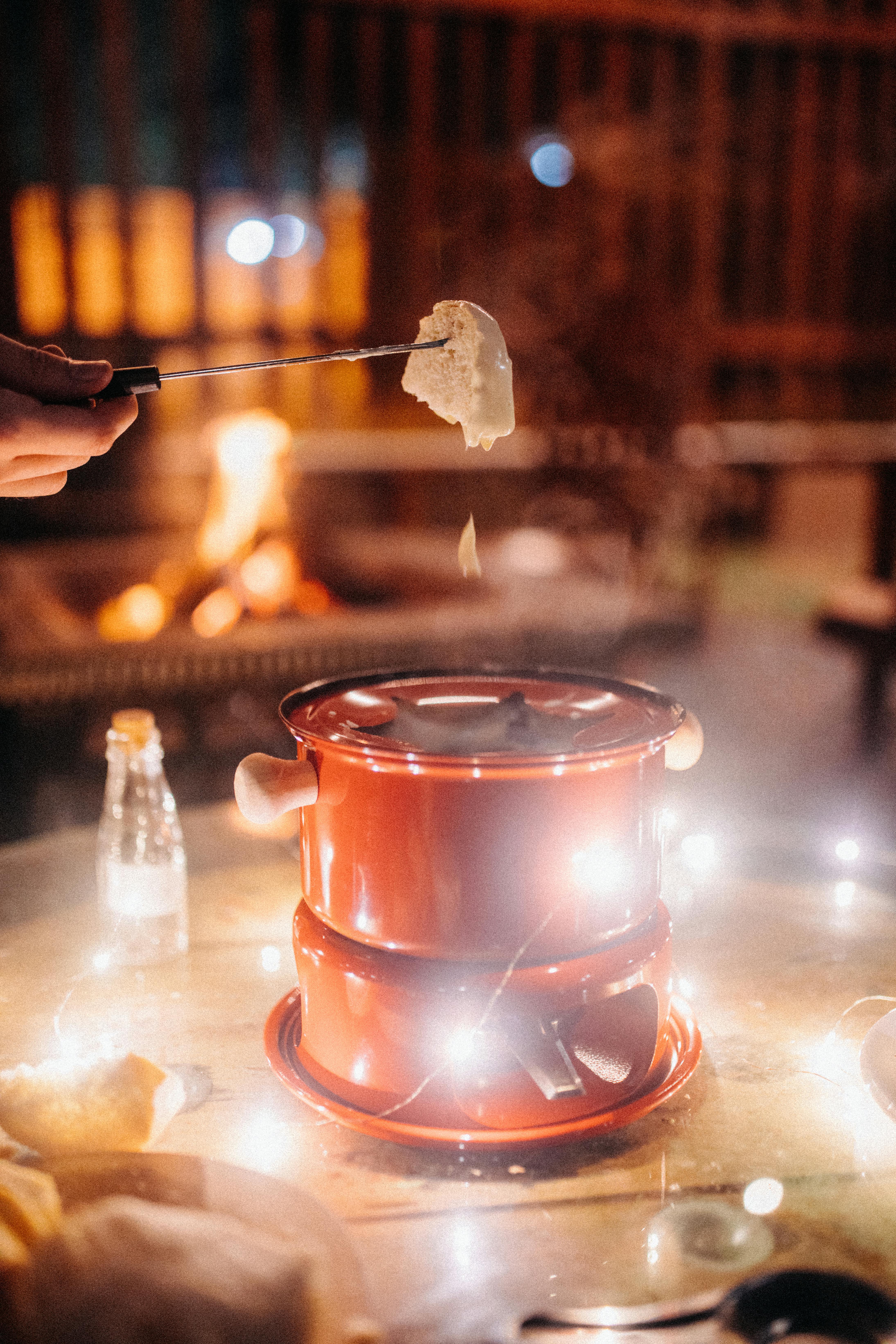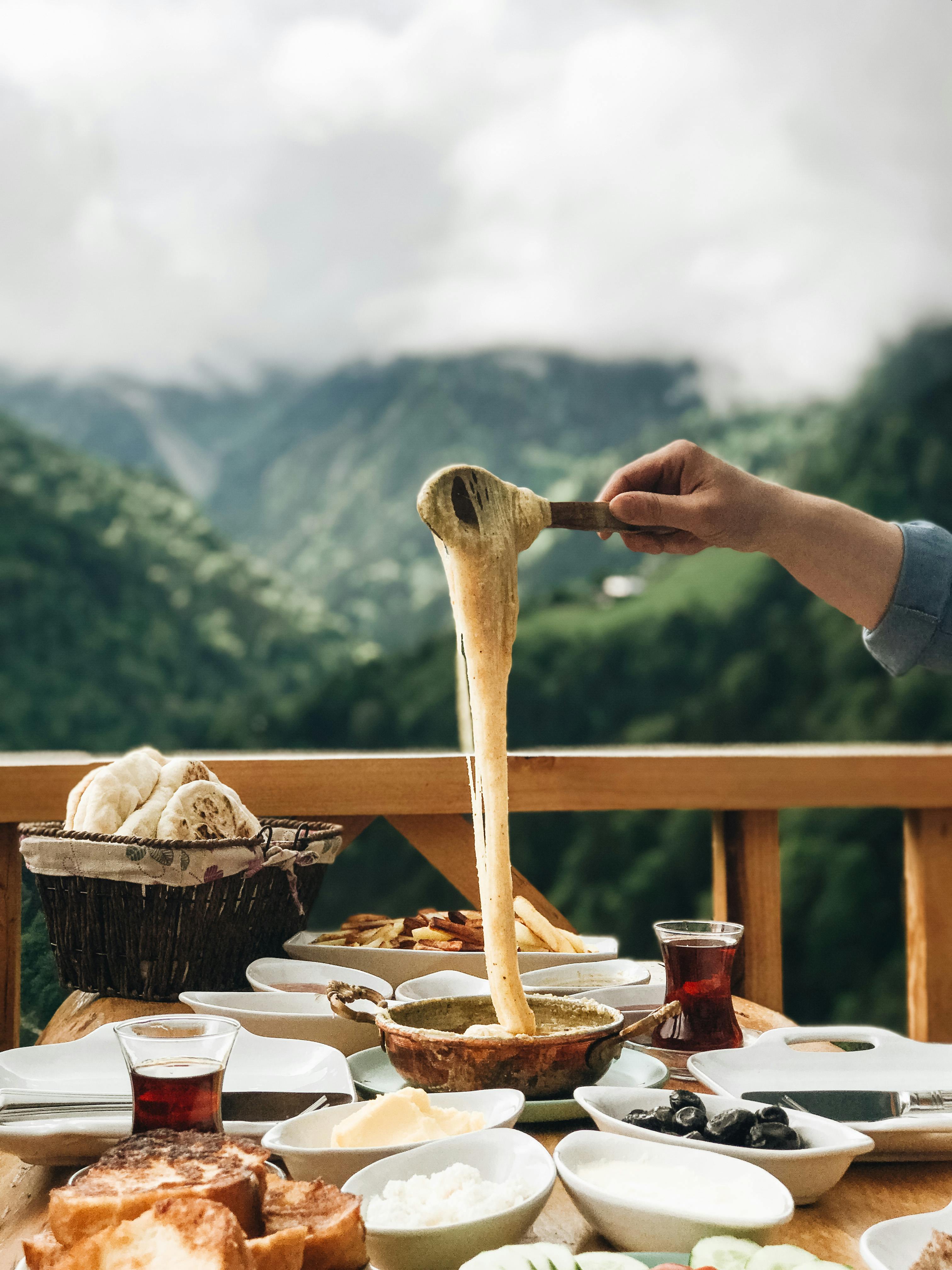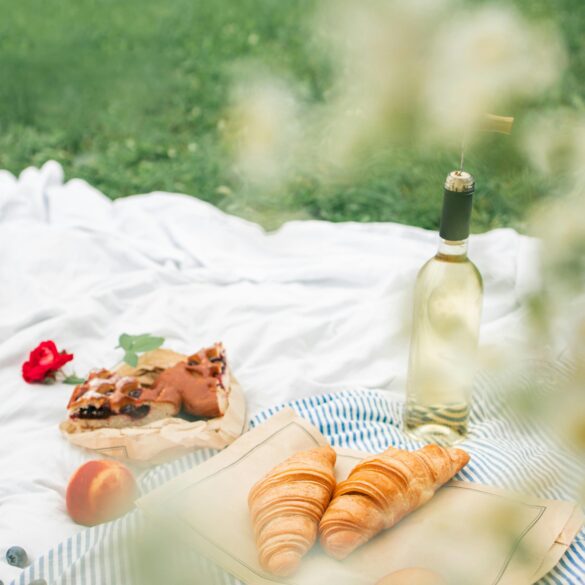Perfect Swiss Fondue at Home: Chef Secrets & Authentic Techniques
What truly makes a fondue “Swiss” instead of just a gooey pot of melted cheese? You’d be amazed at how many home cooks try to replicate this alpine classic, only to end up with scorched cheese, stodgy texture, or worse—an oil-slicked disaster reminiscent of my very first fondue attempt back in culinary school (which, for the record, my Swiss instructor called “a bathtub of sadness”). These days, after years as a chef and even more years as a fondue devotee, I’ve learned that precision, ritual, and regional nuance matter almost as much as the cheese itself. And here’s the good news: With the right approach—and some professional tricks you won’t find in generic cookbooks—anyone can create a restaurant-quality Swiss fondue at home that’s silky, aromatic, and richly satisfying. I know, because I’ve taught everyone from complete novices to seasoned foodies how to do it in kitchens from Zurich to Seattle.
But mastering fondue isn’t about perfect technique alone. It’s about shared experience, the gentle rivalry of who drops their bread cube, and understanding why certain Swiss valleys blend different cheeses or swirl their wine a certain way. In this guide, I’ll break down not just the how, but the *why*: the science, the tradition, and the deceptively simple chef techniques that elevate home fondue from “good enough” to sublime. I’ll share stories from my own kitchen missteps (and triumphs), troubleshoot the most common mistakes, and weave in those quirky Swiss customs that make fondue a true celebration—year-round, not just après-ski.
The Swiss Roots: A Brief Fondue Origin Story
Most people picture a roaring chalet fire, a battered caquelon (the heavy ceramic pot), and a table of friends swirling bread cubes. But did you ever wonder how fondue actually became *the* national dish of Switzerland? I’ll admit: For years, I assumed it was as old as the hills. Actually, cheese fondue as we know it didn’t become an all-nation obsession until the 20th century. Before that, it was a rustic Alpine staple in the French-speaking cantons—a clever, hungry way to use up aging cheese and stale bread during the winter months1. What really struck me was discovering how cheese producers and the Swiss Cheese Union (yes, this is a real thing) launched a full-scale marketing campaign in the 1930s to promote “La Fondue” and boost cheese sales2. Fondue fever spread, and soon every canton had its own fiercely protected recipe, each claiming to be the *real* Swiss fondue. My chef mentors in Zurich like to joke that arguing about fondue is as Swiss as skiing or precision watches.
“The beauty of fondue is that it’s comfort food with a ritual—a conversation around a pot, a communal meal with no agenda but enjoyment.”
Official Swiss government statistics show that Switzerland consumes more cheese per capita than almost any nation—over 22 kg (48 lbs) annually! Fondue, raclette, and local cheese plates are key to this alpine appetite3.
Essential Ingredients, Equipment & The Real Swiss Cheese Equation
Here’s a simple truth: Most home fondue fails start before the cheese ever hits the pot. In my experience, getting the right *ingredients* and *basic tools*—plus understanding their real function—makes all the difference. If there’s one thing I wish every aspiring fondue-maker would absorb, it’s this: Good cheese fondue is a balancing act of the correct blend, proper melting, and careful emulsification. Substituting random cheeses or skipping the splash of kirsch is, honestly, where nearly every home disaster begins. Let’s run through the foundation first.
Buy smaller pieces of cheese from a reputable cheesemonger or specialty grocery. Ask them to cut to order so you get the freshest flavor and texture—and let them know you’re making Swiss fondue. Good cheese shops *love* helping with this.
| Key Ingredient | Traditional Swiss Role | Chef-Approved Substitutes | Pitfalls to Avoid |
|---|---|---|---|
| Gruyère | Base for nutty, deeply savory flavor & smooth melt | Beaufort, Comté (French alpine cheeses) | Low-moisture, aged-out ‘Swiss’ slices; pre-shredded cheese |
| Emmental | Adds mildness, classic ‘stretch’, & open texture | Appenzeller, Raclette (regional options) | Foreign “Swiss cheese”—texture and flavor are completely different. |
| Dry White Wine | Acid sharpens & binds cheese, adds aroma | Dry hard cider, alcohol-free: unsweetened apple juice + splash lemon | Sweet or oaky wines—they wreck flavor and texture. |
| Kirsch (Cherry Brandy) | Signature flavor, helps cheese emulsify smoothly | Unflavored vodka or lemon juice for alcohol-free | Omitting acid/spirit entirely—leads to splitting! |
So, what about gear? In Switzerland, nearly every home has a caquelon (the squat, heavy fondue pot), sturdy fondue forks, and a portable burner. If you’re just starting at home: A thick enamel or ceramic saucepan, skewers, and a small butane burner or even an induction plate will suffice. My early attempts were on an old gas stove—serviceable, but watch the direct heat (it can scorch!). Trust me: A thick-bottomed pot is your best friend for gentle, even melting.
Chef Secrets: Professional Techniques for Rich, Ultra-Silky Fondue
Right, so you’ve gathered beautiful cheese, the right wine, and you’re feeling confident. Pause here. This is honestly where most home cooks (myself included, at the beginning) underestimate the finer details. Professional Swiss chefs are obsessively careful about technique—because fondue is as much about process as flavor. Here’s what separates an amateur’s “cheese melt” from an experienced chef’s sublime fondue (and yes, I messed up all these steps at various points before I learned from the best).
- Grate, Don’t Cube: Always grate cheese—don’t cube or process it. Finer surface area means consistent melting and much less risk of stubborn clumps. This one step changed everything for me after I bungled a dinner party fondue with chunky half-melted globs.
- Prep Your Pot Properly: Rub the caquelon with a cut clove of garlic before adding anything else. It isn’t a gimmick. It anchors aroma, and yes, it makes a delicate difference. Every Swiss grandmother will insist on this.
- Wine Must Be Hot Before the Cheese: Heat the wine to a gentle simmer, never a boil, before adding cheese. Cold wine leads to gluey, uneven melting.
- Add Cheese Gradually, Stirring in a Figure Eight: “Dump and stir” is a rookie move. Sprinkle handfuls of cheese into simmering wine, stirring gently in a figure-eight with a wooden (not metal) spoon. This helps the proteins emulsify without seizing up. Jumping the gun ruined my pot more than once early on.
- Finish with Cornstarch and Kirsch: Blend a tablespoon of cornstarch with a shot of kirsch, then drizzle into the almost-smooth fondue. It’s the secret to silkiness—and to stable, table-friendly texture. Don’t skip this or swap it for flour, or you’ll get odd clumping and off flavors.
Swiss fondue is always about temperature. Keep it barely simmering while melting—around 70-75°C (160-167°F) is the gold zone. Use a thermometer until muscle memory kicks in (I still check every other batch).
The Professional “Fondue Flow” (Step-By-Step)
- Grade all cheeses and have them ready by your cooktop.
- Rub caquelon with garlic, add wine, and heat until steaming and aroma rises.
- Add cheese slowly, stirring continuously—never allow full boiling.
- Off the heat, blend kirsch with cornstarch, then briskly stir into melted cheese mix.
- Season (fresh-ground pepper, grating of nutmeg), and transfer to a gently heated base at the table.
It sounds complex, but after a few times it becomes intuitive—sort of like riding a bike, but much tastier. Let that sink in for a moment: You’re crafting an emulsified sauce, not just melting cheese. That’s why temperature, gradual addition, and continuous movement are so critical. Ever seen chefs swirl the fondue and check ribboning? They’re watching for that perfect sheen: glossy, not oily; drapey, not runny.4
“If it bubbles violently, it’s ruined. Fondue should sigh, not shout.”
Classic Home Cook Mistakes (And How to Fix Them)
Here’s the part where I admit that, for all my chef training, fondue humbled me for years. I’ve burnt, split, overcooked, and under-seasoned enough pots to write a troubleshooting manual. Actually, I should have led with this earlier, but hindsight is 20/20. Here are the biggest pitfalls I see in home kitchens—and the easy saves:
- Wrong Cheese, Wrong Ratio. Supermarket-block “Swiss” cheese, pre-shredded bags, or single-cheese pots. You need proper ripened, unprocessed cheese, always in a blend. Gruyère and Emmental are non-negotiable for the classic style. Experiment with others once you’ve nailed this baseline.
- Too Hot, Too Fast. Temperature is everything. If the cheese boils, it splits into oil and rubbery curds. Slow and steady is the chef’s mantra here.
- Poor Emulsification. Skipping the acid (wine, cider) or cornstarch step = disastrous. I forgot once during a class, and the whole batch turned lumpy and separated. My embarrassment was only softened by free drinks afterward.
- Skipping Seasoning. I meet home cooks who serve bland cheese fondue. A pinch of black pepper and microplane grating of nutmeg are non-negotiable.
- Using The Wrong Pot. Thin-bottomed pots (especially metal) scorch easily. If caquelon isn’t available, choose the thickest ceramic or enameled saucepan you can find.
My first professional fondue competition (Lucerne, 2014) ended in disaster when our burner malfunctioned mid-service. It forced me to improvise: I melted cheese gently over a steaming bain-marie instead while frantically whisking in extra wine for texture. Bottom line: Calm and adaptability matter more than perfect tools.
The Emotional Arc: Fondue is Forgiving
What really strikes me, every time, is that fondue is emotionally charged. It evokes comfort, nostalgia, and some light competitive spirit. Maybe that’s why everyone, from Swiss pensioners to contemporary chefs, has a story about fondue mishaps and triumphs. My professional opinion? Don’t worry about minor errors. This is as much a communal event as a technical feat. Plus, the best conversations I’ve ever had at a table started after we laughed off a split batch together.

Troubleshooting: Rescue Flawed Fondue Like a Pro
I’m going to be completely honest—a perfectly smooth fondue isn’t always guaranteed, even after years of practice. Actually, let me clarify: Sometimes the weather, humidity, or just a rogue batch of cheese can throw things off. The good news? Swiss chefs have a trick for every emergency scenario. Here’s my personal playbook for common fondue melt-downs (pun intended):
| Disaster | How It Happens | Chef-Approved Rescue | Emotional Recovery Factor |
|---|---|---|---|
| Fondue Split (Greasy/Oily) | Either cheese boiled, or acid wasn’t sufficient. | Remove from heat, add splash of cold wine, whisk furiously. If needed, an extra ½ tsp cornstarch dissolved in wine may bring it back. If oil pools, pour it off gently. | Don’t panic. I’ve seen chefs in top Zurich restaurants mess this up during busy service! |
| Fondue Too Thick | Too much cheese for the liquid/wine amount, or overcooked. | Slowly whisk in more hot wine (1-2 Tbsp at a time) until consistency improves. | It happens—think of it as a “fondue reduction.” |
| Fondue Too Runny | Undercooked cheese or too much liquid, too little starch. | Increase heat slightly, whisking gently. If that fails, stir in ½ tsp cornstarch dissolved in a bit of wine or kirsch and let cook for another minute. | You’ll get there. Sometimes takes a couple of tries. (My record: 3 rescue attempts in a row.) |
| Grainy/Lumpy Fondue | Wrong cheese, temperature too hot/cold, or cheese dumped all at once. | Remove from heat, whisk hard, and add a *little* more wine + starch. Strain out irredeemable lumps if necessary. | Tough one, but always salvageable enough for “fondue bread pudding” the next day. |
Every canton in Switzerland invents its own “secret” fix for split fondue. In Fribourg, cooks sometimes use half Gruyère, half Vacherin—they claim it almost never splits5.
“Real fondue can’t hide—if it’s wrong, everyone at the table knows. But a good host turns even the worst mistake into a story.”
Regional Twists: How Swiss Villages Make Fondue Their Own
You know, I used to think “Swiss fondue” meant just one recipe. Turns out, every mountain valley and lakeside town swears by its own cheese blend, wine, and rituals. Let me step back and admit—my thinking’s evolved a bit. In Romandie (the French-speaking west), it’s all about Gruyère and Emmental in equal balance. Go southeast toward Appenzell, and they’ll sneak in spicier, tangier Appenzeller. And then there’s the famous Vaud/Fribourg style: a creamy, ultra-smooth fondue moitié-moitié (half Gruyère, half Vacherin). My Appenzell chef friend confides that anything without their local cheese “lacks soul”—but my Bernese mentor calls Appenzeller “the whiskey of cheese: Not for the faint of heart.”
- Fribourg: Moitié-Moitié – Gruyère and Vacherin Fribourgeois blend. Add cheese only after the wine warms, and often skip the garlic step by tradition.
- Valais: Tomato Fondue – Add ripe tomatoes or tomato paste for a zesty, tangy result. (My first try tasted more like pizza in a bowl, honestly.)
- Ticino: Italian Accent – Some homes blend sharp Italian mountain cheese and serve with pickled vegetables and prosciutto.
- Zurich: Punch of Kirsch – Zurich fondue tends towards extra kirsch, with a peppery finish and assertive aroma. I’m partial to this style for winter gatherings.
Many Swiss villages run local fondue festivals in winter and early spring. If you’re in Switzerland, these are an unbeatable way to sample truly regional variations, hear legendary debates, and maybe win a cheese trivia contest (as I did, purely by guessing!).
Swiss Chefs’ Table: Pairing Bites & Regional Drinks
Every chef I know insists that fondue isn’t a meal without intentionally matched sides and drinks. You might assume bread is enough, but in Switzerland, fondue is a whole table affair. I learned the hard way (after a slightly tipsy group stormed my kitchen at a workshop demanding “Proper accompaniments!”) that variety counts. Here are the classics and my personal favorites:
- Bread: Day-old rustic sourdough or country loaf, cut into hearty cubes. Always with some crust for dipping control.
- Boiled New Potatoes: Particularly in Vaud or Basel. Dip warm, whole potatoes for a rib-sticking treat.
- Pickles & Cornichons: The acidity and crunch are a must for balancing cheese richness.
- Charcuterie: Cured meats like Bündnerfleisch, prosciutto, or local ham—especially for larger gatherings.
- Steamed Veg: Think broccoli, cauliflower, carrots (an addition my German-born mentor swore by).
- Drinks: Dry Swiss or French white wine (Chasselas is the go-to), black tea (helps digestion), or kirsch as a bracing “chaser.”
My advice? Try a short flight of local wines or ciders alongside. You’ll quickly learn which styles highlight which cheese blends. Oh, and a tip—avoid soft drinks, which clash badly with the cheese’s fat and salt. I still cringe remembering my first mistake pairing fondue with cola at age 13 (not recommended, trust me).
“Pairing fondue is about balancing richness with acid and bite—just like a chef balances a sauce. The accompaniments matter as much as the cheese.”
Serving, Sides & Swiss Fondue Etiquette
Now comes the most joyful part: the serving and the table ritual. If you ask any Swiss chef—or really, anyone who’s survived a family reunion in the Alps—they’ll tell you fondue is *about* the table as much as the cheese. I used to get flustered about the “rules” of fondue service. Over the years, I’ve learned they’re more about fun, camaraderie, and shared laughter. Still, here’s a quick breakdown born of both professional experience and rueful observation (like the time I watched a dear friend eat half the crust—and pay a steep price in silly “forfeit”):
- Spearing bread or potato? No double dipping, and never let your fork touch your mouth.
- Lost your bread in the pot? Tradition says you owe the group a favor—a round of drinks, or a dare. (I still remember being forced into Swiss yodeling after a lost cube in Zug!)
- Stir the pot occasionally in a figure-eight—not just to mix, but to keep the cheese from clinging to the bottom.
- The “religieuse”—the toasted cheese crust at the bottom—gets split among diners at the end. Some call it a reward, others a reckoning.
Beyond Cheese: Fondue Variations for Adventurous Cooks
Once you’ve nailed the classic, you might be keen for experimentation. I certainly am; as a chef, my ongoing curiosity means I’m always riffing on the basics. A few authentic or chef-approved departures:
- Spicy Fondue: Add crushed white pepper—or if you’re really adventurous, a hint of fresh chili.
- Mushroom Fondue: Sauté wild mushrooms, stir into the melted cheese for earthiness.
- Herb-Infused Fondue: Steep thyme, marjoram, or a bay leaf in the wine before adding cheese, remove before serving.
- Swiss “Chocolat”: Swap cheese for Swiss dark chocolate, add cream, and serve with fruit…for afters. (A Zurich pastry chef first showed me this one—it really is a crowd-pleaser!)
Admittedly, the purists in Bern would shudder, but food is evolution. Just remember: Master the foundation, and every creative flourish can shine.
“Even after 20 years as a chef, fondue reminds me that perfection is less important than great company and unpretentious joy.”
Don’t just read—try it yourself. Invite friends, experiment, and let mistakes become tomorrow’s stories. Swiss fondue mastery is a journey, not a finish line. Share your results, and above all, enjoy!



